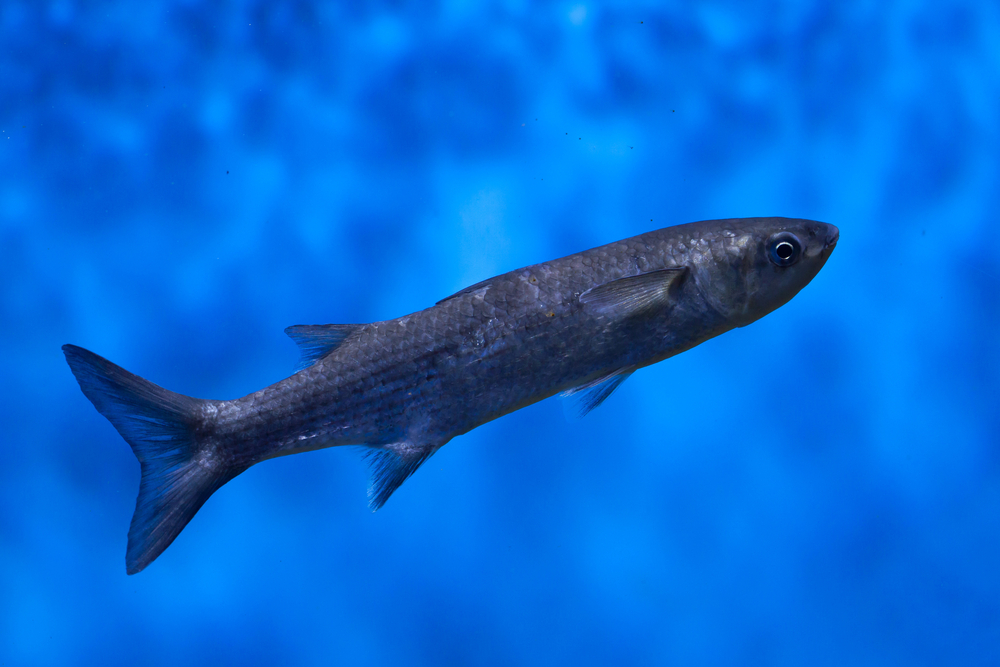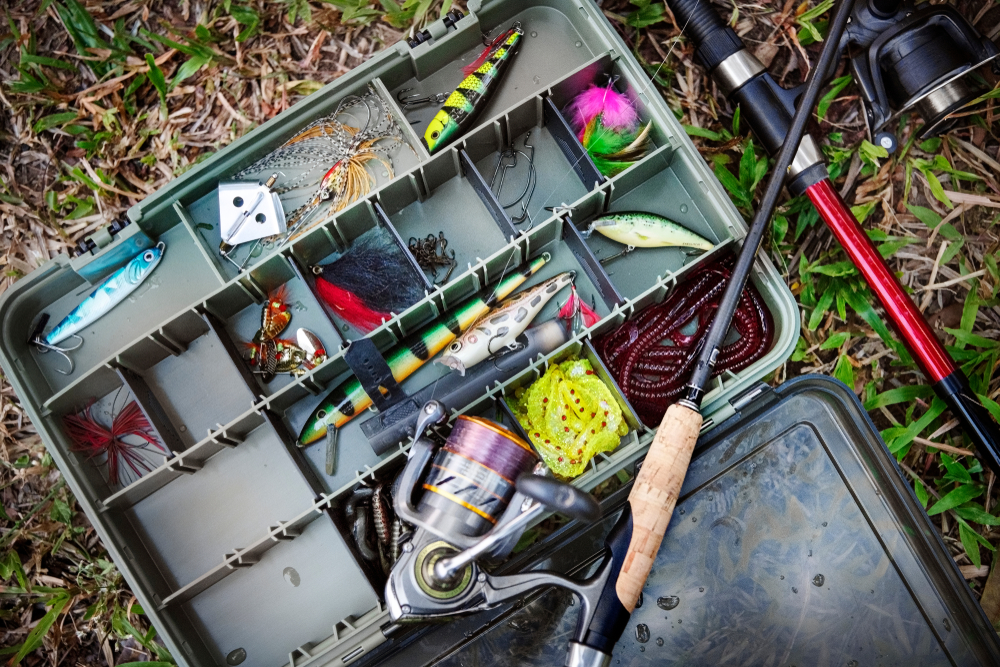That magic time of year is just around the corner for the New Jersey salty longrodder and for most of us it couldn’t get here soon enough. The “summer doldrums” which is as much a nemesis as her winter counterpart “cabin fever” has kept us without a bend in our rod for long enough. The fall however is quickly approaching and it is time for things to heat up once again.
The fall at the Jersey Shore is a special time of year for several reasons. First, most of the crowds are gone and beach access is restored where sunbathers and swimmers once had the right of way. Visual and tactile sensations change as Mother Nature adds a crispness to the morning air and replaces green leaf laden trees with a lollipop array of splendor. Hickory aromas of wood burning stoves permeate the air while armchair quarterbacks rooting for their favorite teams become a national pastime.
But while these things are nice and take center stage for many people the longrodder’s focus is more directed to the suds where some of the best fishing that we can experience is finally upon us. It is time for our classic fall blitzes to begin as some rather large linesiders along with the arrival of our southern guest the false albacore take center stage and are more than willing to take a fly.
My article this month talks about the best of the fall. A primer if you may to get you ready for some of the rod pretzeling, reel screeching action that is just ahead. Part one will deal with the reappearance of the striped bass and the impetus that draws these most sought after gamefish right to our feet. Next month, part two will discuss one of our most prized trophies, albies on the fly.
Introduction
The false dawn has captured your attention as just enough light is present to visually scan the surface of the water. There is very little wave action on this cool fall morning and beyond the break the water looks like a hockey rink than as been freshly groomed. As you scan 180 degrees across the surface you notice some subtle swirls and breaks, you also notice some water that is being pushed. These visually clues immediately heighten your awareness as your suspicions are now confirmed. There are bass on the prowl. In front of you just to your left the water suddenly explodes as fingerlike bait is sprayed in every direction. A quick cast just to the outside of the commotion, several strips, and bang you are in. You drive the hook home and your summer dry spell is over as a burly bass rips to the east.
Mullet is the key

These events are typical of what to expect beginning around the second or third week in September as the first return of large bass once again reappear along our New Jersey shores. The impetus that triggers this response and puts the bass right at your feet is our annual mullet run. Thousands upon thousands of these tasty little morsels will school up and pour out of our back rivers and bays as they migrate south along the beach. If you have ever watched mullet head south than you have surely seen the beauty of this event. They etch a perfect sketch of the coastline without missing a stroke.
There are a variety of mullet species that range from Nova Scotia to Florida. Here in New Jersey the species that takes center stage is Mugil cephalus, also known as the striped mullet. Other common names for this bait are finger mullet or mushers. This is so because when viewed from the front they are cylindrical and blunt like your fingertips with a similar length. Their bellies are also soft and they can be easily mushed when squeezed between your fingers.
Mullet are bluish gray to silver along their dorsal aspect and fade from silver to white along their bellies. The small baits that we see by the thousands in the fall, under six inches in length, will lack horizontal stripes. Larger mullet will have six or seven horizontal stripes; these baits are often referred to as corn cobs.
Size of the Bass
It is interesting to note that the larger bass that we see busting on these baits are representative of a good class of teen size bass. They will usually range in size from eight to sixteen pounds. We do not see many larger bass in the twenty, thirty, or forty pound range that we see moving along the beach in the latter part of November and December.
This is so because the first return of these larger fish are what I call local fish. These are bass that are coming from our near inshore waters just off the beach to about seven miles out. Our inshore rockpiles, lumps, and ridges all support a good population of these teen size bass throughout the summer months. Some fish will also come from the deeper holes in our rivers, canals, or bays.
These bass do not make up the school of fish that are much bigger that migrate down from our New England waters as the winter approaches. You can also count on a good number of schoolie and slot size bass that will be right on the mullet. Many times when the blitz is on you can nail one after another of these smaller fish.
Timing of the Migration
The middle of September is usually when we begin to see the annual mullet migration begin along our beaches. Many anglers will associate this behavior with dropping water temperatures and reduced amount of daylight. For the most part this is not the stimulus that drives the bait on their way.
These and other bait migrations are controlled to a great extent by lunar phases. In this case we are looking at the new moon in September that is the key factor. This year this event will occur around the middle of the month on the 17th. New and full moon phases act as the innate calendars that have a significant impact on both migration and spawning patterns of both fish and baits.
Rarely do we see water temperatures drop quickly in September because of a physical property of water known as heat capacity. Water has a high heat capacity, which means in simpler terms that it will warm or cool much more slowly than the land. For example, it’s takes more energy to change the temperature of one gram of water 1 Celsius degree than it does to change the temperature of one gram of a solid material the same amount. For this reason we can find air temperatures in the fall to dip down into the forty degree range at night while the ocean temperatures will be holding in the upper sixty degree range. The more significant effect of dropping water temperatures is that it will act as a stimulus to cause fish to feed.
How to be Successful
When the mullet are present in good numbers along the beach the key to your longrod success is going to be the fly profile that you select. When you look at a mullet you will see that it has a rounded snout and a much wider body girth than other predominate baits that will be in the surf at the same time, namely spearing and bay anchovies. Even with these other baits around the bass will show a preference for the mullet and key in on them.
With literally thousands of these baits around it may seem impossible for a bass to pick out your fly from amongst the real things. But they do. It is important for your flies to emulate the mullet’s body profile in both length, width, and height and also in the way that it moves through the water. When you closely watch mullet along the beach you will see that their rounded snout produces a characteristic wake and recognizable dimples as they move. For this reason your flies should push a lot of water.
There are a number of flies that should be included as part of your arsenal. Two of the most productive are Popovics siliclones and his modified siliclone known as the “Pop Lips”. Other flies to carry are deer hair sliders, snake flies, bulkier deceivers, Bob’s bangers, and sar-mul-macks. Fly sizes should range from 1/0 to 4/0.
Fly Color and Design

For fly colors look to tie in grays, silver, blues, and greens on the dorsal aspect of the fly with white dominating the belly of the fly. These colors will be most true to the natural colors of the mullet. Don’t overlook however using yellow or chartreuse as the main color of the fly either. For some reason these two colors always seem to produce well.
When the surf is on the calm side mullet will swim in the upper part of the water column. This will make them easy prey from below. Any deeper water that is along side a jetty is a perfect place for bass to torpedo up through the schools. Here is where the viewing perspective of the bass will focus in on the white under belly of the bait. For this reason you can see the importance of having plenty of white tied in on the underside of your flies.
Another design consideration for your flies will become apparent when the mullet are swimming in very shallow water along the beach. Here the viewing perspective of the bass is more in a lateral plane or in other words at eye level. As a result the bass will zero in on the wider girth of this bait as it will be looking right at it. Here is where the wider profile of your fly is important in getting the bass’s attention. In either perspective the prominent eyes of the mullet will stand out and can be viewed by the bass both from the side and from below. For this reason you should include eyes as part of your fly design.
Working Your Flies
When the mullet are on the move an intermediate line will be your workhorse line in the surf. These lines are favored over floating lines since they will allow you to remain in better contact with your fly. As a result you will be able to get a better hook set since there will be no slack in the line that could otherwise be produced when a floater gets tossed around. You will want to strike as soon as you feel that characteristic thump. Floating lines will still be effective when fishing your topwater poppers or bangers. Just take the slack up quickly and so you are tight to the fly.
An interesting characteristic of mullet is that they constantly seem to be on the move. Even if the bass have them pinned against the sides of a jetty or in a pocket they will still move up and down in an effort to escape. This observable characteristic should dictate the type of retrieve that you employ to your flies. A steady two handed retrieve will appear more natural to the bass than a strip-pause type of retrieve that is usually used with smaller weighted flies.
To do this place the rod under your arm with the reel firmly locked behind your armpit. Point the rod tip towards the water and begin your retrieve. When a bass inhales your fly set the hook by continuing to pull on the line. You don’t have to grab the rod with one hand. Give the line a good tug to help drive the hook through the bony palate of the bass. Once you are confident the hook is set get the fish on the reel by letting the line slip through your hands while under tension.
Other Factors
If we have a relatively calm fall with no encroaching hurricanes you can expect the mullet run to be at its best and to last for several weeks. Severe weather and rough surf have a tendency to push these baits off the beach and on their way much more quickly. The early morning pre-dawn hours usually offer an opportunity to see bass stalking the baits as sea surfaces are usually flat as glass.
The annual mullet run kicks off our fall. We know that fish are going to be there and hooking into a decent size fish is a definite possibility. What could be better knowing that the summer doldrums are behind us and plenty of action lies ahead. If you have never taken to the suds with the longrod than this fall is the time to start. Get ready, “it’s mullet time” at the Jersey Shore. Good fishinG……fly fishing that is!






